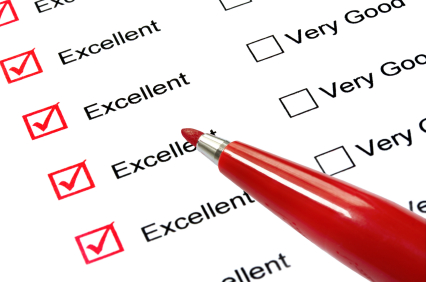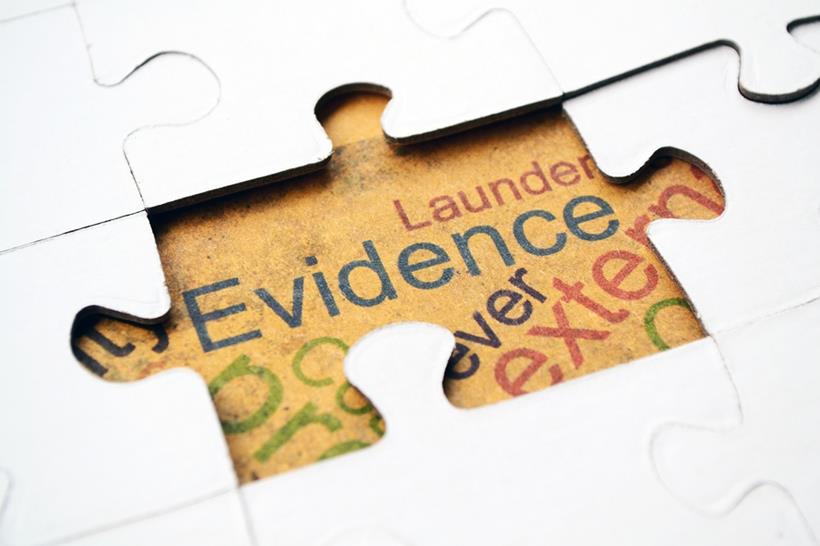
This article appeared in the February, 2012 issue of IQ – the Records and Information Management Professionals Australasia (RIM) Quarterly magazine. To download, click here: Creating your blended learning success story
“What’s a blended learning solution?” our client enquired when we recently publicised our placement as Finalist in the Blended Learning Solutions of the 2011 Australian Institute of Training & Development Awards for Excellence. Its training talk for multi-mode training design was our reply. Whilst commonly used in major training initiatives, it is still rare to hear the expression within the Records and Information Management (RIM) sector, which is truly perplexing given that every EDRMS training program is a major initiative impacting all staff within an organisation.
Blended learning solutions utilise multiple communication and delivery modes to educate the target audience and achieve a required performance goal. Providing learners a somewhat random assortment of modes of training is not blended learning and nor is it effective. Every element within a blended solution has a specific purpose.
Blended learning, by its nature is complex. However, this does not restrict use of a quality blended learning solutions to large organisation, big budget training programs. Part of the beauty of a blended solution is the ability to harness internal resources as effective elements.
Whilst it is tempting to use what we, as trainers or record managers personally like as training tools and communication modes in designing a blended solution, don’t do it. What we like is irrelevant. We need to discover what will engage individuals in the lines of business, and what will block learning and transference of that learning to the workplace. Complete a comprehensive training needs analysis first to determine the best training and support tools and communication modes.
The Discovery Stage: Training Needs Analysis
Use a Training Needs Analysis (TNA) to get to know the client from head to toe. Interview stakeholders across the organization to build, at a minimum, knowledge of the learning preferences, existing skills, attitude towards learning, culture and Recordkeeping maturity. Validate what people have told you by cross checking your findings against any hard data that is available. For example look at recordkeeping statistics and outcomes of similar training initiatives. Be sure to deal with fact and build an accurate profile of your audience.
Simultaneously put the records team through an appraisal to check the strengths and weaknesses of the team, appraising their record management, EDRMS, communication and training/support skills at least. Also determine if the team has the size and ability to support the business requirements of the project, whilst at the same time continuing day to day business.
A thorough TNA identifies project risks, enabling them to be engineered out of the project in the design phase. The TNA should also tease out, if it is not already clearly stated, the goal of the project. The goal of the project combined with the knowledge gained from the TNA forms the scope of the project. Skilled project managers will create a high and low end scope. This makes the budgetary process a negotiation over what certainty of outcome is required and how much to be invest to get that certainty. Discussion of the cost of best practice is desirable to achieve the best outcomes rather than a take it or leave it approach to the proposed scope. If the budget has been pre-set at a level too low in light of the TNA results take the opportunity to use the TNA to fuel an objective debate over the budget.
A final key outcome of the training needs analysis is to build an effective rollout plan. Start by considering what the potential components of a rollout are. For instance is the rollout based on business units, or on business processes, or a combination of both? Plot them on an impact and ease matrix (i.e. impact on delivering the goal, and ease of doing). Aim to complete the high impact easy to do components first. The high impact hard to do components will be next, but will need extra detail in the plan to address the challenges. Question whether to do the low impact components at all. Is this valuable use of your resources? If you do address the low impact difficult to do components break them into easier to do components.
Don’t be tempted to create a rollout plan starting with resistant business units first. Whilst it may look like a great win if you can achieve a successful outcome early in the project, the risk is high their attitude will render the training unsuccessful due to the level of resistance. The whole project may become compromised and your budget will blow out redesigning the project and retraining.
Understand what drivers that can be harnessed to move the hard to do components into the easy to do quadrant. For instance success stories from one business unit will filter to other units working closely with them. Or a unit may have an audit on the horizon. Time their participation at the stage where you are solving a top of mind problem. They will be ready to listen and you will be adding immediate value. There’s an exhaustive amount of information gathered in a TNA and it looks like a major investment. The size of that investment and the time taken can be limited by using one of two deliberate approaches to information gathering:
- A broad, shallow TNA across the whole business to provide general knowledge and then a deeper TNA for each business unit pre-training to identify anomalies that will require attention.
- A full TNA on one business unit on which the overall program is based, with minor TNA’s on each unit prior to rollout.
Reduce duplicate effort in conducting a TNA by managing your project team to work together. Share information gained by the record manager, any external specialists and the change manager with the training manager. Likewise, save time in having to generate reports by using statistics supplied by the EDRMS administrator and the IT department.
Developing The Solution
Design Considerations
Developing a blended learning solution from the TNA is an exciting journey of thoughtful analysis, use of tried and tested design elements and plenty of blue sky thinking. The objective of this analysis and design process is to answer one key question; “How to we deliver the skills and knowledge that will move people from resistance to acceptance, and finally enthusiastic use of the EDRMS?”
The designer must determine from the knowledge and facts gained from the TNA what content and modes of delivery will work and what won’t. Additionally they must consider where change management can support the training, and where the training can support change management, integrating these two fundamental elements of an EDRMS project into a symphony of learning opportunities.
Developing a blended learning is part science and a lot of art. It is about designing a multi-layered approach to managing human behaviour so that people learn knowledge at a pace they can tolerate using modes of communication they prefer and providing support to practice their new skills and transfer them back into the workplace.
Designing to specific outcomes is essential. This includes the change messages and how training instruction is written and delivered. Each activity and all the elements within a blended learning solution must have specific goals, and be designed in detail to achieve the defined outcomes.
Learning and development teams also need to be adept at anticipating what the human reaction of different stakeholders will be to every message. Learning programs must have flexibility and utilise continuous improvement as a means of taking remedial action where the original design results in unforeseen reactions. Often potential risks can be identified from the outset and contingencies put in place within the design. A common example is when stakeholders continue to show reluctance or even outright hostility to changing their recordkeeping habits. The specific response to these people will be dependent on their personality; however, planning to engage in one-on-one sessions with very reluctant stakeholders should be part of every design.
Design Activities
There are 8 interlinking and supporting activities to be completed within an EDRMS program to achieve maximum success. It may not be within the training provider’s scope to design the elements for all activities but each of them is harnessed to create a blended learning solution.
- Planning the rollout
- Creating communications materials and developing change activities
- Developing the records team
- Engaging stakeholders and managers
- Developing Super User skills
- Developing End User skills
- Creating a program to transfer skills to the workplace
- Re-engineering business processes.
Each activity is built of multiple components. For example, development of the records team may include instructor led sessions of EDRMS training, communications training and Train the Trainer. At the same time it can include on-the-job personal and skill development for individuals who will need to adapt to new responsibilities. Consider adding presentation responsibilities for appropriate records staff into the manager engagement activity to build strength in liaising with higher levels of management. Each blended learning component of the records team development activity will address the skill gaps necessary to achieve the required goal for the project.
So in summary:
Blended Learning Design In Practice
As mentioned before the componentry of the blended learning solution depends on the goal of the program and the environment in which the program is being developed and implemented. Three scenarios follow which demonstrate how this works in practice.
Scenario 1: Building Sustainable Internal Capability
An organisation with an EDRMS implemented 5 years ago which has never been formally rolled out across all location. On engagement the EDRMS is used exclusively for capturing a narrow range of records by head office administrative staff.
The Goal: All staff has the capability to manage records electronically and actively do so.
The Organisation Overview: 200 staff, 20 locations across state, 1.5 proficient records staff with good change, planning and business analyst skills, large variety of individual work activities, high level of executive support, highly educated workforce.
The Strategic Approach: Utilise identified internal capabilities to reduce costs and drive adoption; harnessing skilled records staff to manage internal change, planning and business analysis and the capability of the workforce to be developed to self-deliver training. The overall outcome will be a workforce skilled in EDRMS and recordkeeping with an independently sustainable training program.
Recommendations:
- Develop rollout and change management plan internally following minimalistic TNA with training company
- Develop communications pack externally with internal responsibility for delivery
- Deliver End User and Administrator training to the records team. Engage training company for ad-hoc consultations that include ongoing development through informal education and knowledge transfer over life of program.
- Deliver manager exclusive technical training/change sessions pre-rollout., supported by communications and change activities driven internally.
- Train 40% of Super Users via eLearning delivered in an instructor led environment to build confidence in eLearning. Training includes how to deliver eLearning to End Users and engage in business process.
- Train End Users via eLearning with Super User support. Activate licences only on training completion.
- Re-engineer organisation wide major business processes (Ministerials, policies, etc.) to drive adoption.
- Support Business Unit re-engineering and offer consultant support at business unit expense.
Scenario 2: Adoption in an Immature Environment
This organisation is implementing an EDRMS for the first time.
The Goal: All records are managed within EDRMS from initial creation
The Organisation Overview: 1000 staff, 1 location, centralised record unit of 10 staff with low EDRMS and business analysis skills, all staff practising physical record management, integration of the EDRMS with multiple systems, moving from centralised record management to devolved model.
The Strategic Approach: Drive adoption via a controlled, staged rollout that also manages the adaptation of the record team to their new EDRMS role, requirements and skill development. From the outset create a business support structure via Super Users and self-directed learning tools for End Users to minimise necessity of individual support by the records team.
Recommendations:
- Rollout business unit by business unit over 6 months.
- Develop a strongly defined communications plan externally with high use of visual tools to create a consistent, upbeat message (posters, flyers, and video).
- Train records staff in End User and Records specific use of the EDRMS, BCS training, file planning and support, and communications.
- Run manager workshops on record management responsibilities, system capability and risk management through EDRMS.
- Train 20% of staff as Super Users using multi-modal delivery (instructor led, eLearning, online forums, help guides).
- Train End Users by instructor led training with advanced topics available via eLearning and Super User support.
- Develop file planning sessions and targeted goals, with a reward structure in place managed by internal records team.
- Establish improved productivity through information management of organisation wide business process in EDRMS using an external business analyst.
Scenario 3: Connecting Business
The organisation has an identified risk within a business unit where critical information is currently managed via physical records with a high loss rate.
The Goal: Reduce the risk of information loss by re-engineering the business process to utilise the existing EDRMS.
The Organisation Overview: Business unit of 500 staff within a larger organisation, 100 locations across state, 2 records officers within unit, recent past experience of major technical software implementation causing breakdown of business functions, very low level of administrative staff, high level of executive support, single critical business process.
The Strategic Approach: Deliver the EDRMS solution as a business productivity enhancement of core service delivery. Key actions will be to provide ample opportunity for input into the business solution to reduce project failure risk through cynicism caused by association with previous failures. The approach will incorporate a high intensity communications and change program, and extensive trialling of all components to prove the training and change design before rollout.
Recommendations:
- Develop a rollout plan with initial stage of a quarantined trial to fully test and endorse process. Timeframe for delivery not defined until trial demonstrates reduced risk and increased productivity. Delivery across state to be undertaken on a staggered regional rollout. Expectation full trial and approval will take 12 months or more.
- Provide basic EDRMS skills instructor led training provided to all staff.
- Map core business process which is the sole recordkeeping function for the majority of staff, to the EDRMS. Create training specific to business process, rules and use of EDRMS. Provide instructor led training to all staff.
- Carefully control dissemination of information via multiple modes over life of project, with a strong face to face approach. Use an external project manager to work closely with internal business improvement team to communicate with staff.
- Elicit input and feedback from stakeholders and managers via a steering committee. Educate them on communicating the change to staff and provide them with tools to do so.
- Deliver training at regional centres.
- Establish a support team to manage queries.
- Gain mandate by Executive to commence fully electronic file management.







